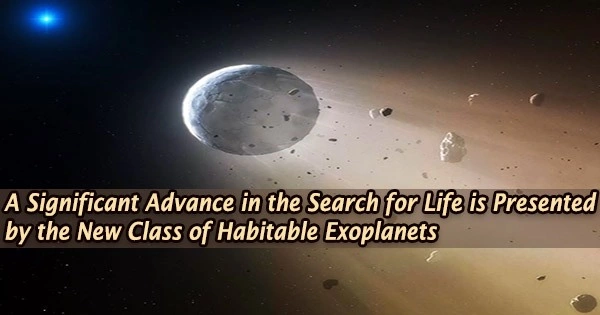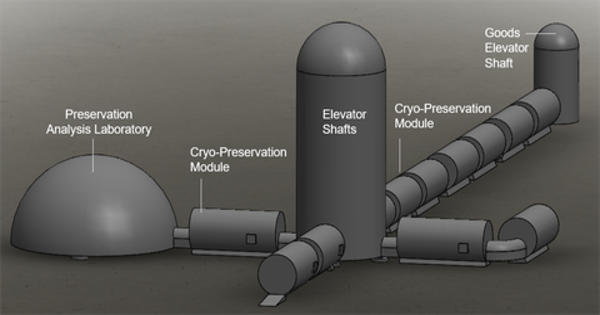Astronomers have discovered a new type of exoplanets that are substantially different from our own but may harbor life, which might hasten the search for extraterrestrial life.
Astronomers have mostly searched for planets that are comparable to Earth in terms of size, mass, temperature, and atmospheric chemistry in their hunt for extraterrestrial life. University of Cambridge astronomers, however, think that other, more plausible alternatives exist.
The ‘Hycean’ planets, which are hot, ocean-covered planets with hydrogen-rich atmospheres and are more abundant and detectable than Earth-like planets, are a new class of habitable planets discovered by the researchers.
The findings, which were published in The Astrophysical Journal, according to the researchers, raise the likelihood of discovering biosignatures of extraterrestrial life in the next two to three years.
“Hycean planets open a whole new avenue in our search for life elsewhere,” said Dr. Nikku Madhusudhan from Cambridge’s Institute of Astronomy, who led the research.
While several of the top Hycean possibilities discovered by the researchers are larger and hotter than Earth, they nonetheless possess the necessary features to support the presence of vast seas and microbial life comparable to that observed in some of Earth’s most harsh aquatic conditions.
In comparison to Earth-like planets, these worlds also permit a far broader habitable zone, or ‘Goldilocks zone.’ This suggests that even if they are outside the range where a planet like Earth would need to be in order to be habitable, they may still support life.
Since the first extrasolar planet was spotted over 30 years ago, thousands of planets have been found outside of our Solar System. They are frequently referred to as ‘super-Earths’ or ‘mini-Neptunes’ and represent the great majority of planets between the sizes of Earth and Neptune. They can have atmospheres rich in hydrogen or be primarily ice or rocky giants.
More than 1.6 times the size of Earth, most mini-Neptunes are too large to have rocky interiors like Earth yet smaller than Neptune. The pressure and temperature beneath such planets’ hydrogen-rich atmospheres would be too great, according to earlier analyses of such worlds.
However, a recent investigation by Madhusudhan’s team on the mini-Neptune K2-18b revealed that under specific circumstances, these planets could support life. As a result, a thorough analysis of the whole range of planetary and stellar features for which these criteria are plausible, which known exoplanets may satisfy those conditions, and if their biosignatures may be detectable, was conducted.
Essentially, when we’ve been looking for these various molecular signatures, we have been focusing on planets similar to Earth, which is a reasonable place to start. But we think Hycean planets offer a better chance of finding several trace biosignatures.
Dr. Nikku Madhusudhan
A new class of planets, known as Hycean planets, with enormous planet-wide oceans beneath hydrogen-rich atmospheres was discovered as a result of the examination. Hycean planets have atmospheres that can reach temperatures of almost 200 degrees Celsius and can be up to 2.6 times larger than Earth, but their oceanic conditions may be similar to those that support microbial life in Earth’s seas.
These planets also include tidally locked ‘cold’ Hycean worlds that get little radiation from their stars and ‘dark’ Hycean worlds that may only have habitable circumstances on their permanent night sides.
The majority of known exoplanets are of this size, however they have not been explored as thoroughly as super-Earths. The most promising areas to search for life elsewhere in the Galaxy may have been lurking in plain sight because hycean worlds are probably fairly widespread.
However, size alone is not enough to confirm whether a planet is Hycean: other aspects such as mass, temperature and atmospheric properties are required for confirmation.
Astronomers must first identify whether a planet is in its star’s habitable zone before looking for chemical signals that can reveal the planet’s atmosphere and internal structure, which control the conditions on the planet’s surface, the presence of oceans, and the possibility of life.
Additionally, astronomers search for specific biosignatures that can point to the presence of life. These are primarily found on Earth and include oxygen, ozone, methane, and nitrous oxide.
There are also a number of other biomarkers, such as methyl chloride and dimethyl sulphide, that are less abundant on Earth but can be promising indicators of life on planets with hydrogen-rich atmospheres where oxygen or ozone may not be as abundant.
“Essentially, when we’ve been looking for these various molecular signatures, we have been focusing on planets similar to Earth, which is a reasonable place to start,” said Madhusudhan. “But we think Hycean planets offer a better chance of finding several trace biosignatures.”
“It’s exciting that habitable conditions could exist on planets so different from Earth,” said co-author Anjali Piette, also from Cambridge.
Madhusudhan and his team found that a number of trace terrestrial biomarkers expected to be present in Hycean atmospheres would be readily detectable with spectroscopic observations in the near future. The larger sizes, higher temperatures and hydrogen-rich atmospheres of Hycean planets make their atmospheric signatures much more detectable than Earth-like planets.
The Cambridge team identified a sizeable sample of potential Hycean worlds which are prime candidates for detailed study with next-generation telescopes, such as the James Webb Space Telescope (JWST), which is due to be launched later this year.
These planets all orbit red dwarf stars between 35-150 light years away: close by astronomical standards. Planned JWST observations of the most promising candidate, K2-18b, could lead to the detection of one or more biosignature molecules.
“A biosignature detection would transform our understanding of life in the universe,” said Madhusudhan. “We need to be open about where we expect to find life and what form that life could take, as nature continues to surprise us in often unimaginable ways.”
















